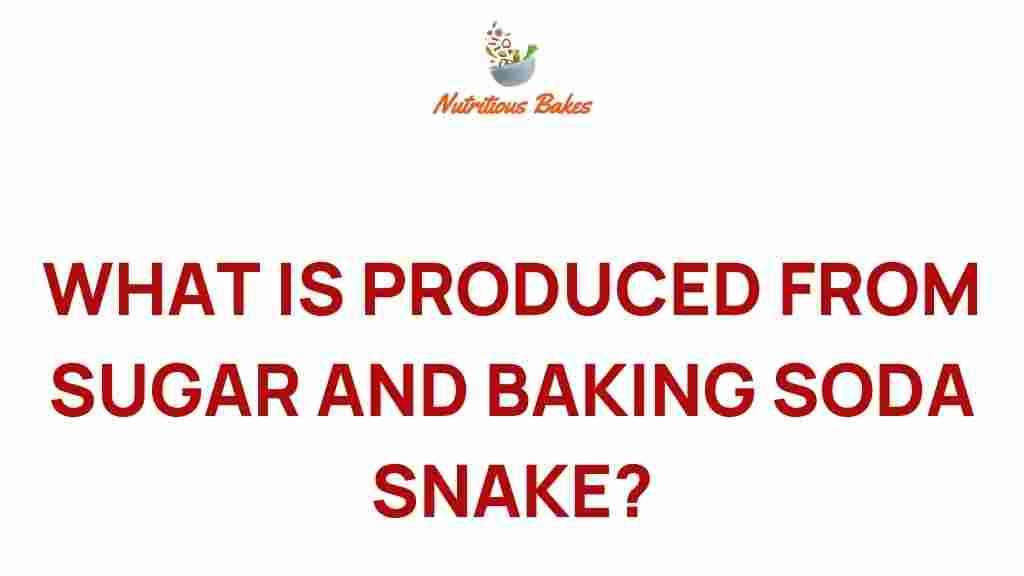The Surprising Science Behind Sugar Reactions and Baking Soda
When it comes to baking and cooking, understanding the chemistry behind the ingredients you use can elevate your sweet treats to new heights. Among these ingredients, sugar and baking soda play crucial roles, not only in flavor but also in texture and color. In this article, we will explore the fascinating science behind sugar reactions with baking soda, diving deep into culinary science and food interactions. Whether you are a novice baker or a seasoned chef, these insights will enhance your kitchen experiments and baking tips.
Understanding Sugar and Baking Soda in Food Science
To grasp the importance of sugar and baking soda in baking, we must first understand what these ingredients are and how they interact.
What is Sugar?
Sugar, primarily in the form of sucrose, is a carbohydrate that provides sweetness and energy. It can be derived from various sources, including sugar cane, sugar beets, and fruits. In baking, sugar serves multiple functions:
- Sweetness: Enhances flavor.
- Moisture Retention: Helps keep baked goods moist.
- Color Development: Contributes to browning through caramelization.
- Texture: Influences the crumb and structure of baked goods.
What is Baking Soda?
Baking soda, or sodium bicarbonate, is a chemical leavening agent. When acid and moisture are present, it produces carbon dioxide gas, which causes doughs and batters to rise. This reaction is essential for achieving the light, airy textures we often seek in cakes and cookies.
The Chemistry of Sugar Reactions and Baking Soda
When sugar and baking soda are combined in a baking recipe, a series of chemical reactions occur that affect the final product. Let’s break down how these reactions work:
1. The Role of Baking Soda
Baking soda needs an acid to activate its leavening properties. Common acids used in baking include:
- Vinegar
- Lemon juice
- Buttermilk
- Yogurt
When baking soda reacts with these acids, it releases carbon dioxide, which creates bubbles in the batter. This is what makes cakes fluffy and cookies light.
2. Sugar’s Role in the Reaction
While sugar does not directly participate in the activation of baking soda, it can influence the environment. For instance, the presence of sugar affects:
- Moisture Content: Sugar attracts and retains moisture, which can affect how the baking soda reacts.
- Browning: Through the Maillard reaction and caramelization, sugar contributes to the color and flavor of baked goods.
- Texture: High sugar content can result in chewy textures, while less sugar may lead to crumblier outcomes.
Step-by-Step Process: Conducting Kitchen Experiments
Understanding the reactions between sugar and baking soda can be a fun and educational experience. Here’s a simple kitchen experiment to illustrate these principles:
Experiment: Baking Soda and Sugar Reaction
Materials Needed:
- 1 cup flour
- 1/2 cup sugar
- 1/2 teaspoon baking soda
- 1/2 teaspoon vinegar (or lemon juice)
- 1/2 cup water
- Mixing bowl
- Baking tray
- Oven
Steps:
- Preheat your oven to 350°F (175°C).
- In a mixing bowl, combine flour, sugar, and baking soda.
- In a separate container, mix the vinegar (or lemon juice) with water.
- Slowly add the liquid mixture to the dry ingredients, stirring until combined.
- Pour the batter onto a baking tray.
- Bake for 20-25 minutes, or until golden brown.
As you bake, observe how the sugar browns and the baking soda causes the batter to rise, creating a delightful texture and flavor.
Troubleshooting Baking Tips
Even experienced bakers encounter issues. Here are some common problems and solutions when working with sugar and baking soda:
1. Cake Not Rising
If your cake fails to rise, check the following:
- Ensure your baking soda is fresh. Old baking soda loses potency.
- Verify the ratios. Too much sugar can inhibit the rise.
- Make sure you’re using an acid to activate the baking soda.
2. Overly Sweet or Dense Cakes
If your sweet treats are too sweet or dense, consider these adjustments:
- Reduce the sugar slightly; remember that sugar also retains moisture.
- Adjust the flour-to-sugar ratio for better texture.
- Experiment with different types of sugar for varying sweetness levels.
3. Uneven Browning
If your baked goods are browning unevenly, try these tips:
- Rotate your baking tray halfway through baking.
- Check your oven temperature with an oven thermometer.
- Use light-colored baking pans to promote even heat distribution.
Conclusion: The Art and Science of Baking
The interactions between sugar and baking soda are a beautiful blend of culinary science and chemistry. Understanding these sugar reactions allows bakers to create delightful sweet treats that not only taste good but also have the perfect texture. Remember, baking is both an art and a science—experimenting with these ingredients can lead to delicious outcomes.
For more baking tips and kitchen experiments, check out this informative article on basic baking techniques. If you’re ready to dive deeper into the world of food science, consider exploring resources on culinary chemistry.
Now that you’re armed with knowledge about sugar and baking soda interactions, get back into the kitchen and start experimenting. Happy baking!
This article is in the category Ingredients and created by NutritiousBakes Team
